
The history of spaceflight is full of ground-breaking and revolutionary events as well as great dividing moments of “before and after” in the entire history of the human race. Such examples include the flight of Yuri Gagarin, the first Son of Earth to ever leave our planet, as well as that of Apollo 11 which carried the first human beings onto the lunar surface. The history of astronomy is similarly replete with events of such importance, those that have literary changed the world in ways that weren’t readily obvious at the time. It is not an exaggeration to state that the launch of NASA’s Hubble Space telescope 25 years ago last week can be included in this list. Its importance can be made apparent not least because of the fact that the orbiting observatory has allowed humanity to peer deep into the Universe, so close to the edge of cosmic space and time, while also helping us to visualise its true depth like no other instrument before it.
Black Holes, Quasars, and Other Strange Members of the Cosmic Zoo
Of all the objects in the Universe, black holes can be considered the most fascinating and mystifying. Enchanting scientists and science-fiction writers alike for decades, they comprise the ultimate cosmic paradox: objects that have an infinite density occupying a zero volume, from where nothing, not even light, can escape and all known laws of physics break down.

Black holes, due to their nature, cannot be studied directly, making any observations of these objects a really painstaking process. Yet because of their immense masses, their presence can be detected by the gravitational forces they exert on their surroundings. For decades, astronomers speculated that the centers of galaxies were home to supermassive black holes with masses that could be up to several billion times that of the Sun. Yet the detailed study of these galactic environments with ground-based telescopes was a very difficult proposition, due to the blurring effects of the Earth’s atmosphere. Hubble’s position high above the protective yet highly distorting veil of our planet’s atmosphere allowed astronomers to peer deep into the centers of distant and nearby galaxies with clarity, which provided them with unprecedented views of the many violent and energetic processes that power these cosmic behemoths.
One of Hubble’s first such studies was that of M87 in the early 1990s, a massive elliptical galaxy located inside the nearby Virgo Cluster of galaxies, at a distance of approximately 52 million light-years away. The orbiting observatory studied M87 extensively for more than a decade, peering deep into the compact core of the galaxy, which allowed astronomers to measure the density and distribution of stars within the region in great detail for the first time. These observations showed that the stellar density in the center of M87 was many hundreds to thousands of times greater than what would be expected if no black hole were present. Subsequent calculations showed that at the very heart of M87 lies a very dense and massive object with a mass of more than 2 billion times that of the Sun, no bigger than our Solar System. Around it, Hubble discovered a fast-spinning accretion disk of material that was slowly falling toward the center. In addition, Hubble’s sharp eyes imaged the 4,000-light-year-wide high-speed jet of hot plasma that was emanating from the galaxy’s central regions that was powered by a very strong magnetic field. These unprecedented observations provided scientists with their first-ever direct evidence for the existence of supermassive black holes that were subsequently detected in many other galaxies as well throughout the Universe.
“Central supermassive black holes are a key component in all big galaxies,” says Eileen Meyer, a Postdoctoral Fellow at the Space Telescope Science Institute, in Baltimore, Md. “Most of these black holes are believed to have gone through an active phase, and black-hole-powered jets from this active phase play a key role in the evolution of galaxies. By studying the details of this process in the nearest galaxy with an optical jet, we can hope to learn more about galaxy formation and black hole physics in general.”

Another equally exciting family of cosmic objects are quasars. Shinning brightly across the entire electromagnetic spectrum, while exhibiting a luminosity that can be up to thousands of times greater than that of our Milky Way galaxy, these highly energetic objects are among the brightest and most powerful ones in the entire Universe. When they were first detected in 1959 they appeared as stellar-like point sources to ground-based telescopes, making it very difficult for astronomers to determine their exact nature at the time. Additional observations in the decades that followed helped to establish that quasars were not only some of the most luminous objects in the Cosmos, but some of the more distant as well, since their high redshift values revealed that they were many billions of light-years away, out to the edge of the observable Universe.
The study of quasars in the last several decades allowed astronomers to determine that these ultra-luminous cosmic powerhouses weren’t just a random case of “cosmic freaks,” but are actually members of the active galactic nucleus family of objects—compact regions at the centers of faraway galaxies, which are powered by the violent accretion of material around the supermassive black holes that lie there. Yet the detailed study and characterisation of the quasars’ host galaxies had to wait for the launch of the Hubble Space Telescope. The sharp vision and superior resolving capabilities of the orbiting observatory allowed astronomers to separate the very bright glow of quasars themselves from the extremely faint one of their host galaxies, which revealed their shapes, sizes, and structures.
More surprisingly, Hubble’s observations showed that the environments around quasars were much more complex than originally thought. The consensus among the scientific community had been that quasars are “turned on” by violent galaxy collisions, which help to funnel large amounts of material toward their supermassive black holes. Surprisingly, even though that seems to be the case for a number of quasars, Hubble’s observations indicated that most are powered by more “benign,” short-term events of matter accretion instead, from objects that happen to be passing by very close to their supermassive black holes. “I think it’s a combination of processes, such as random stirring of gas, supernovae blasts, swallowing of small bodies, and streams of gas and stars feeding material into the nucleus,” says Dr. Kevin Schawinski, a professor of astrophysics at Yale University. “The brilliant quasars born of galaxy mergers get all the attention because they are so bright and their host galaxies are so messed up. But the typical bread-and-butter quasars are actually where most of the black-hole growth is happening. They are the norm, and they don’t need the drama of a collision to shine.”

One field of study of cosmology and astrophysics where quasars have also been very helpful is the search for gravitationally lensed objects. Gravitational lensing is a term that came into the spotlight with Albert Einstein’s general theory of relativity in the early 20th century. What Einstein showed was that, since every mass in the Universe has gravity, this gravity can “warp” space-time, causing the light of a more distant object to be bent and refocused somewhere else. The greater the mass, the greater its gravity and the greater its ability to bend light. In essence, gravitational lensing can be described as a magnifying lens that amplifies the light of distant, background objects that can’t be observed directly, thus bringing them into view. The first such phenomenon ever to be observed in the Universe was that of a “double quasar” in 1979, named QSO 0957+561, whose telescopic double image was the result of the bending of the quasar’s light from the mass of an intervening foreground galaxy. The Hubble Space Telescope has been instrumental in this research area of astrophysics as well, allowing scientists to discover more than 100 gravitational lenses in the last 20 years. A currently ongoing three-year observing campaign, called The Frontier Fields, which utilises Hubble as well as the rest of NASA’s space-based Great Observatories, has already returned even more spectacular results, by revealing the presence of approximately 3,000 gravitationally lensed distant galaxies, some of which are located more than 13 billion light-years away, near the edge of the observable Universe.
Besides helping to prove one of Einstein’s theoretical predictions on cosmic scales, the discovery of gravitational lenses has subsequently played an important role in the study of the distribution of matter in the Universe, as well as the search for the elusive and mysterious dark matter. The latter is believed to account for approximately 85 percent of the matter in the Universe and is thought to be mostly composed of Weakly Interacting Massive Particles, or WIMPS—a type of hypothesized particles that don’t emit or absorb any electromagnetic radiation, thus making themselves invisible to observations. Observations with Hubble, as well as other space telescopes, have allowed astronomers to map the distribution of matter inside galaxy clusters in great detail, which has provided many indirect evidence for the existence of dark matter. The latest results of such observations in conjunction with the Chandra X-ray Observatory have revealed that, whatever it is made of, dark matter interacts even less with itself inside galaxy clusters than previously thought, allowing theorists to put more constrains on predictions regarding the nature of this elusive substance. “Dark matter is an enigma we have long sought to unravel,” says John Grunsfeld, Associate Administrator for NASA’s Science Mission Directorate in Washington DC. “With the combined capabilities of these great observatories, both in extended mission, we are ever closer to understanding this cosmic phenomenon.”
Dark Energy and the Accelerating Universe
One of the primary science objectives of the Hubble Space Telescope was the study of the Universe’s evolution over time and the determination of the Hubble constant, which is the value that determines the rate at which the Universe is expanding. Astronomer Edwin Hubble changed the science of cosmology forever in the late 1920s, when he discovered that the Milky Way was not the only galaxy in the Cosmos and that the latter was in fact expanding. Likewise, his technological namesake made a similar impact in cosmology seven decades later, by providing astronomers with direct evidence that this expansion has been in fact accelerating over time.

It all came about when two independent research teams, the High-Z Supernova Search Team and that of the Supernova Cosmology Project, used the Hubble Space Telescope in the late 1990s to examine the apparent brightness of over 50 Type Ia supernovae in the distant Universe. These type of supernovae result from the destructive explosions of white dwarf stars in binary star systems, whose brightness can briefly outshine an entire galaxy. Since these types of supernova explosions are thought to reach the same absolute magnitude during their peak, they are used as “standard candles” by astronomers for measuring cosmic distances with great accuracy. Yet what both teams found to their great surprise was that the supernovae that were examined were approximately 25 percent fainter than what they should be, indicating that the they were farther away than originally thought. What this landmark finding meant was that the expansion of the Universe had actually been speeding up with time, eventually giving rise to the term “dark energy” for describing this totally unforeseen, unknown force that causes the Universe to expand ever faster. “We originally set out to use a special kind of exploding star called ‘supernovae’ to measure how fast the Universe was expanding in the past and to compare it to how fast it is expanding now,” Dr. Adam Riess later said, a professor of astrophysics at the Johns Hopkins University in Baltimore, Md., and leader of the High-z Supernova Search Team, who was one of the awardees of the 2011 Nobel Prize in Physics for the discovery of dark energy. “We anticipated finding that gravity had slowed the rate of expansion over time. But that’s not what we found.”
The breakthrough discovery of dark energy can be rightfully regarded as one of the Hubble Space Telescope’s greatest legacies, one that single-handedly overthrown decades of theoretical predictions regarding the evolution and eventual fate of the Universe. “In the 400 years since Galileo turned his telescope to the sky, there have been just a few instances where observational astronomy challenged fundamental physics,” comments Riess. “The discovery that the Universe is accelerating has handed this generation just such a challenge. It is both a shocking surprise and an exciting opportunity for theoretical and observational scientists alike.”
To the Edge of Time
Following the success of the first Hubble servicing mission in 1993, astronomers soon realised that the orbiting observatory had the potential to peer deep into the Universe and reveal details of distant cosmic objects that were previously thought to be unobservable. This prospect finally became a reality in late-December 1995, when a team of researchers pointed Hubble toward an inconspicuous “blank” spot in the sky that was devoid of any stars and other bright sources, in the direction of the Ursa Major constellation. Their goal was to let the space telescope stare at the same point for long periods of time and later check the results. At first, the whole project seemed awkward. What good could it make to have Hubble staring at an “empty” patch in the sky? Yet, after 10 days and 342 separate exposures that lasted for a total of 140 hours, the Hubble Space Telescope returned an image that was unanimously labeled as “the most important ever taken.”

The result was indeed profound. Exceeding all expectations, the image that came to be known as the “Hubble Deep Field,” revealed the presence of more than 3,000 previously unseen galaxies four billion times fainter than what the human eye could see, appearing as they were at a time when the Universe was just 1 billion years old. The importance of the Hubble Deep Field image could not be overstated, for it represented the first time that humanity had visualised the entire history of galactic evolution in one single frame. This iconic image was superseded in the following years by a series of ever-deeper views into the Cosmos, namely the Hubble Ultra-Deep Field in 2004 and the Hubble eXtreme Deep Field in 2012. In tandem, these unprecedented glimpses into cosmic space and time, have provided astronomers with an unparalleled view of the Universe’s history shortly after the end of the so-called cosmic Dark Ages, when the first primordial galaxies began to form. “In my view, the Hubble Deep Fields are some of the images that have made the greatest impact on observational cosmology so far,” says Stefano Cristiani, a researcher at the Astronomical Observatory of Trieste in Italy. “These impressive dips into the depths of space and time have allowed astronomers to glimpse the first steps of galaxy formation more than 10 billion years ago and are without doubt some of the great legacies of the Hubble Space Telescope.”
The many wondrous achievements by the Hubble Space Telescope during its first 25 years of operation have completely changed the landscape of every single field in astronomy, cosmology, and astrophysics, returning revolutionary science along the way. While doing so, it has provided us with hundreds of thousands of images of the Cosmos, of unequaled beauty, in essence opening a new window for everyone on Earth to experience and appreciate the beauty and immensity of cosmic space and time in their everyday lives. “[Hubble’s] greatest short-term public impact has been wonder and curiosity,” says Dr. Frank Summers, an astrophysicist at the Space Telescope Science Institute’s Office of Public Outreach. “The images we produce, and which are widely disseminated, provoke a sense of awe in all of us. Hubble has perhaps done more to expose the public to the magnificent celestial sights than any other telescope in history. And the more powerful impact is to awaken the innate human curiosity. Science is a pursuit of the restlessly inquisitive mind. Scientific thinking is often found lacking in an entertainment-heavy media. Hubble’s ability to reach the public and get them to wonder what, how, and why, are a distinctly positive influence toward raising the level of discussion in the public sphere.”
Some would argue that this is even more important than the legendary observatory’s return on science itself.
Video Credit: SpaceRip/Thomas Lucas Productions, Inc.
Below are more images from the Hubble Space Telescope:



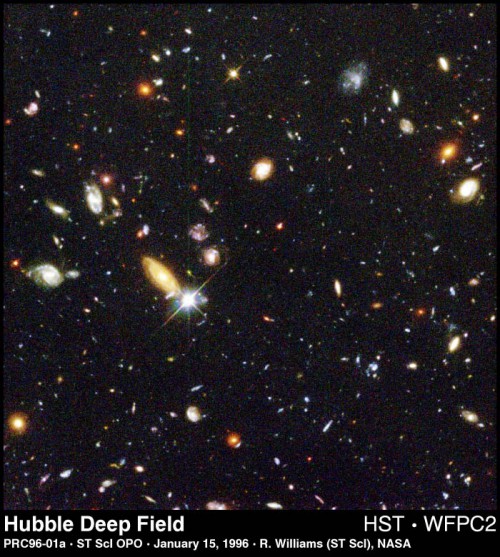


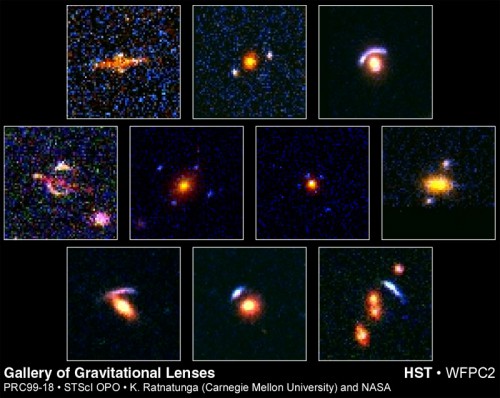
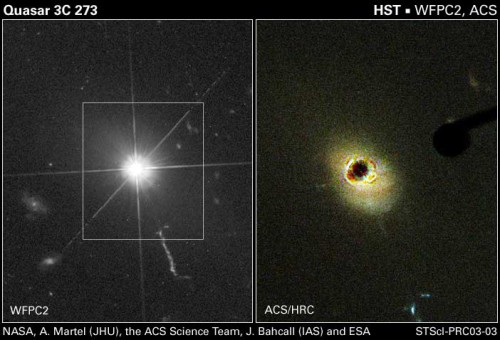
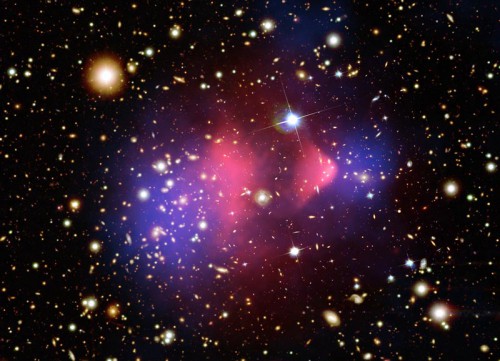
Lensing Map: NASA/STScI; ESO WFI; Magellan/U.Arizona/ D.Clowe et al.
Optical: NASA/STScI; Magellan/U.Arizona/D.Clowe et al.;



![A composite image showing the jet from a black hole at the center of a galaxy striking the edge of its neighboring galaxy, in the system known as 3C 321. NASA, ESA, D. Evans (Harvard-Smithsonian Center for Astrophysics), [X-ray: NASA/CXC/CfA/D.Evans et al.; Optical/UV: NASA/STScI; Radio: NSF/VLA/CfA/D.Evans et al., STFC/JBO/MERLIN]](https://www.americaspace.com/wp-content/uploads/2015/05/hs-2007-37-a-web_print-500x400.jpg)

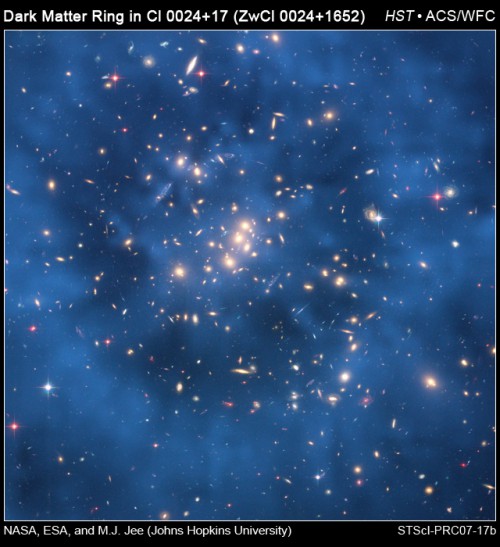
Want to keep up-to-date with all things space? Be sure to “Like” AmericaSpace on Facebook and follow us on Twitter: @AmericaSpace




The countless galaxies with countless planets – what we have been privileged to see and to contemplate these past 25 years – there are few words to accurately describe the mind-boggling impact on humanity. Wow!
“Such examples include the flight of Yuri Gagarin, the first Son of Earth to ever leave our planet, as well as that of Apollo 11 which carried the first human beings onto the lunar surface.”
Actually it was Apollo 8 that was the defining moment- when human beings first left the gravitational field of Earth. And it was Apollo 17 four years later that brought the space age to a close.
I have about 25 years left on an average life span and there is the distinct possibility that I will never see the beginning of a second space age. I blame the NewSpace flim flam for that depressing reality. The evidence for ice on the Moon in 2010 should have started a second space age. There is not much doubt that a campaign contribution by a certain internet billionaire hobbyist inspired the infamously blunt “been there” speech and insured humankind would remain stranded in LEO for the foreseeable future.